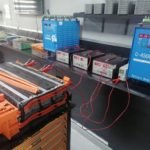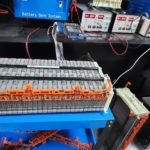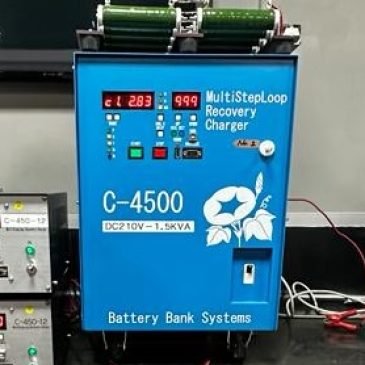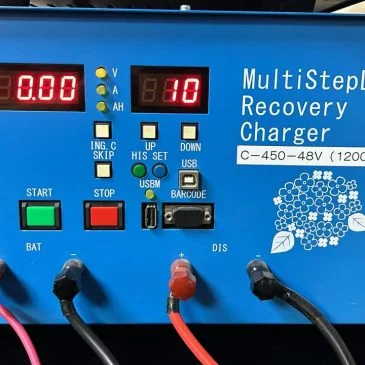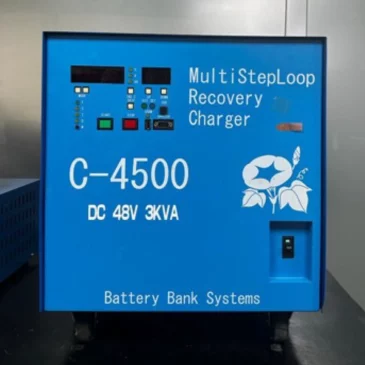Technology
Our technology detects battery health to determine the recovery methods of used batteries for reusing and repurposing. We send the physically damaged batteries to recycling partners with safe and sustainable solutions.
Our R&D team works continuously to develop the technology to increase the speed of the test and regeneration process by understanding more parameters and developing the algorithm accordingly.
Since 2012, Our partners at Battery Bank Systems in Nagoya – Japan, have been developing the tools that our team continues to develop and innovate new tools using machine learning and AI to keep up with the rapidly changing technology advancement.
Battery Types by Sector
Automotive
- Electric Vehicles (EVs): Primarily powered by lithium-ion (Li-ion) batteries due to their high energy density and efficient charge-discharge cycles.
- Hybrid Vehicles: Older models typically use nickel-metal hydride (NiMH) batteries, while newer models are transitioning to lithium-ion.
Industrial
- Power Tools: Depending on the era and design, can be powered by nickel-cadmium (NiCd), nickel-metal hydride (NiMH), or lithium-ion (Li-ion) batteries.
Telecommunications
- Power Tools: Depending on the era and design, can be powered by nickel-cadmium (NiCd), nickel-metal hydride (NiMH), or lithium-ion (Li-ion) batteries.
Renewable Energy & Grid Storage
- Power Tools: Depending on the era and design, can be powered by nickel-cadmium (NiCd), nickel-metal hydride (NiMH), or lithium-ion (Li-ion) batteries.
BBS Machines
The main concept of creating the following Exelx new testing and maintenance machines is to speed up the workflow and reduce time to diagnose batteries with high accuracy and minimal human errors and provide more safety.
Exelx Machines
The main concept of creating the following Exelx new testing and maintenance machines is to speed up the workflow and reduce time to diagnose batteries with high accuracy and minimal human errors and provide more safety.
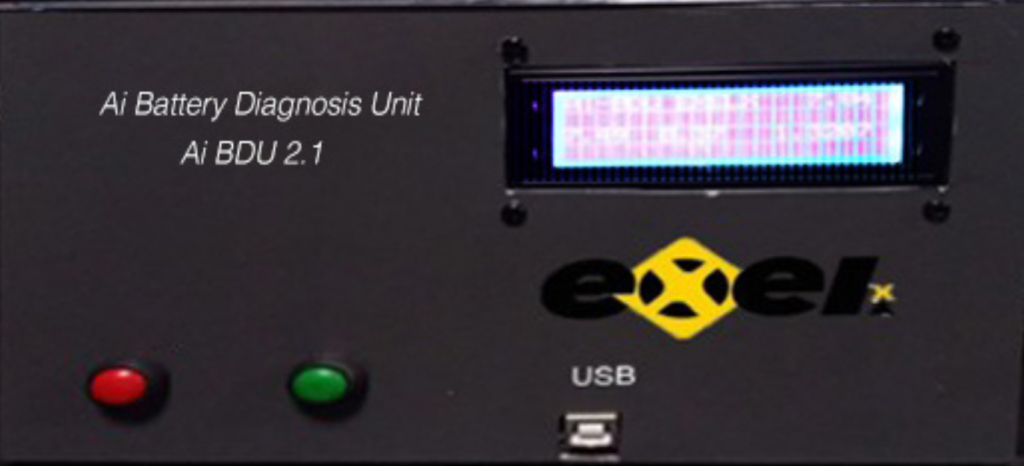
(BDU - Version one)
Diagnostic single cell machine
Battery Diagnosis Unit is, a unit which diagnosis batteries with high accuracy whether it’s (strong, weak, reversed polarity or voltage dropped) and can manage discharging process.

(AI-BDU - Version two)
Developing Artificial diagnostic cell
Artificial Battery Diagnosis Unit is, a unit which diagnosis batteries performance and state of health with high accuracy whether it’s (strong, weak, reversed polarity or voltage dropped) and can manage discharging process.
Why
we’re using Artificial intelligence?
We decided to launch our AI project development to classify the charging/discharging operation of battery cells to predict battery performance for health state using Artificial intelligence techniques.
Artificial intelligence (AI) has become the de facto method for prediction tasks. Provided enough data, AI algorithms can be trained to predict if an individual cell will fail the rehabilitation process beforehand with a high degree of confidence.
The Future of the Technology
The “One Chip Project” is a historic first step to talking about such a big journey to the future, To consolidate and overcome inventory burdens by converting existing circuit technology and software to LSI.
The project goal is to expand work volume and solve semiconductor shortages in addition to increasing workflow and operation effectiveness and efficiency.
To do this, we need to re-arrange and edit the existing circuits and software to be used for various purposes and integrate new semiconductors. The new integrated DSP chip is fully developed Software. Parameter development is progressing, so various chargers and their application products can be developed based on this integration. The new integration is used as the controller because it is very fast, and instruction sets are optimised for high-speed numeric.
DSPs are also less susceptible to ageing. It has an environmental variation with better noise immunity, integrating multiple converter controls into the same processor and optimising the total system cost.

